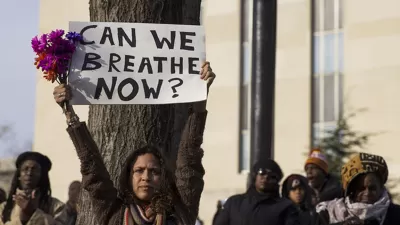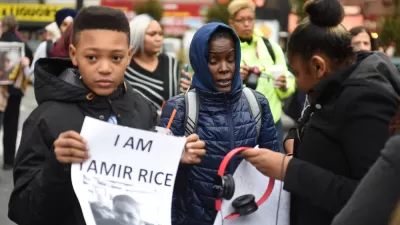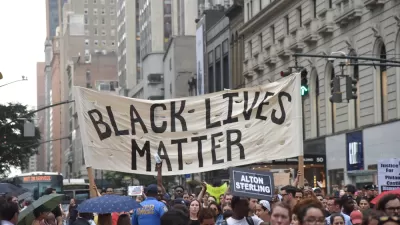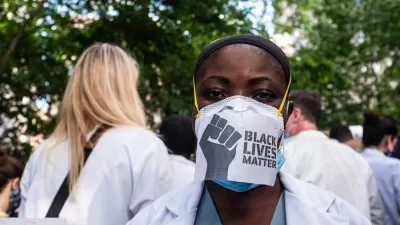The newest issue the Journal of Planning and Education Research responds to a clear need of the time: the need to address social justice in the public realm while reforming planning practices in the United States.

The most recent issue of the Journal of Planning and Education Research responds to one of the very clear demands from urbanists and planners of color during the recent wave of protests and debates: to account for the safety of people of color in the public realm, particularity as a result of disparities in the use of police force and incarceration, before implementing ostensibly progressive planning innovations (see more on the discrepancies between intentions and results in an article published earlier this week on Planetizen).
The Journal of Planning and Education Research published the "Planning beyond Mass Incarceration" recently, while offering the entire contents of the issue temporarily for free online.
Edited by Sheryl -Ann Simpson, Justin Steil, and Aditi Mehta, the issue includes the following essays and research:
- From Revanchism to Inclusion: Institutional Forms of Planning and Police in Hyde Park, Chicago by Steven Averill Sherman (@stephenasherman)
- Latinxs in the Kansas City Metro Area: Policing and Criminalization in Ethnic Enclaves by Dr. Janet Garcia-Hallett @JGarciaHallett ; Dr. Toya Like ; Dr. Theresa Torres ; Dr. Clara Irazabal
- Local Planning in the Age of Mass Decarceration by Dr. Courtney Knapp (@courtneyknapp81)
- When Prison Is the Classroom: Collaborative Learning about Urban Inequality by Dr. Justin Steil and Dr. Aditi Mehta @AditiMehta12
- From Jails to Sanctuary Planning: Spatial Justice in Santa Ana, California by Dr. Carolina S. Sarimiento
- Beyond Safety: Refusing Colonial Violence Through Indigenous Feminist Planning by Dr. Heather Dorries and Dr. Laura Harjo (@lauraharjo)
A blog post by Lisa Schweitzer, to which we owe a hat tip for sharing the news about the open access of this issue, also provides some additional resources for informing anti-racist action into the planning practice and study.
FULL STORY: Planning beyond Mass Incarceration

Maui's Vacation Rental Debate Turns Ugly
Verbal attacks, misinformation campaigns and fistfights plague a high-stakes debate to convert thousands of vacation rentals into long-term housing.

Planetizen Federal Action Tracker
A weekly monitor of how Trump’s orders and actions are impacting planners and planning in America.

In Urban Planning, AI Prompting Could be the New Design Thinking
Creativity has long been key to great urban design. What if we see AI as our new creative partner?

Cal Fire Chatbot Fails to Answer Basic Questions
An AI chatbot designed to provide information about wildfires can’t answer questions about evacuation orders, among other problems.

What Happens if Trump Kills Section 8?
The Trump admin aims to slash federal rental aid by nearly half and shift distribution to states. Experts warn this could spike homelessness and destabilize communities nationwide.

Sean Duffy Targets Rainbow Crosswalks in Road Safety Efforts
Despite evidence that colorful crosswalks actually improve intersection safety — and the lack of almost any crosswalks at all on the nation’s most dangerous arterial roads — U.S. Transportation Secretary Duffy is calling on states to remove them.
Urban Design for Planners 1: Software Tools
This six-course series explores essential urban design concepts using open source software and equips planners with the tools they need to participate fully in the urban design process.
Planning for Universal Design
Learn the tools for implementing Universal Design in planning regulations.
Appalachian Highlands Housing Partners
Gallatin County Department of Planning & Community Development
Heyer Gruel & Associates PA
Mpact (founded as Rail~Volution)
City of Camden Redevelopment Agency
City of Astoria
City of Portland
City of Laramie





























